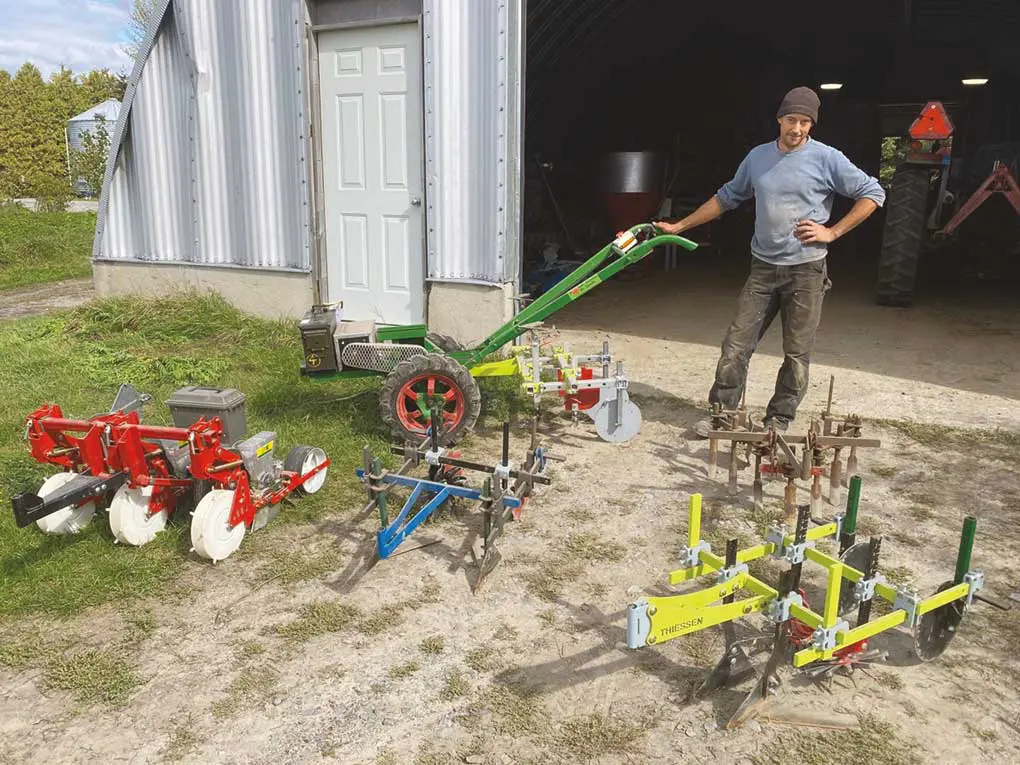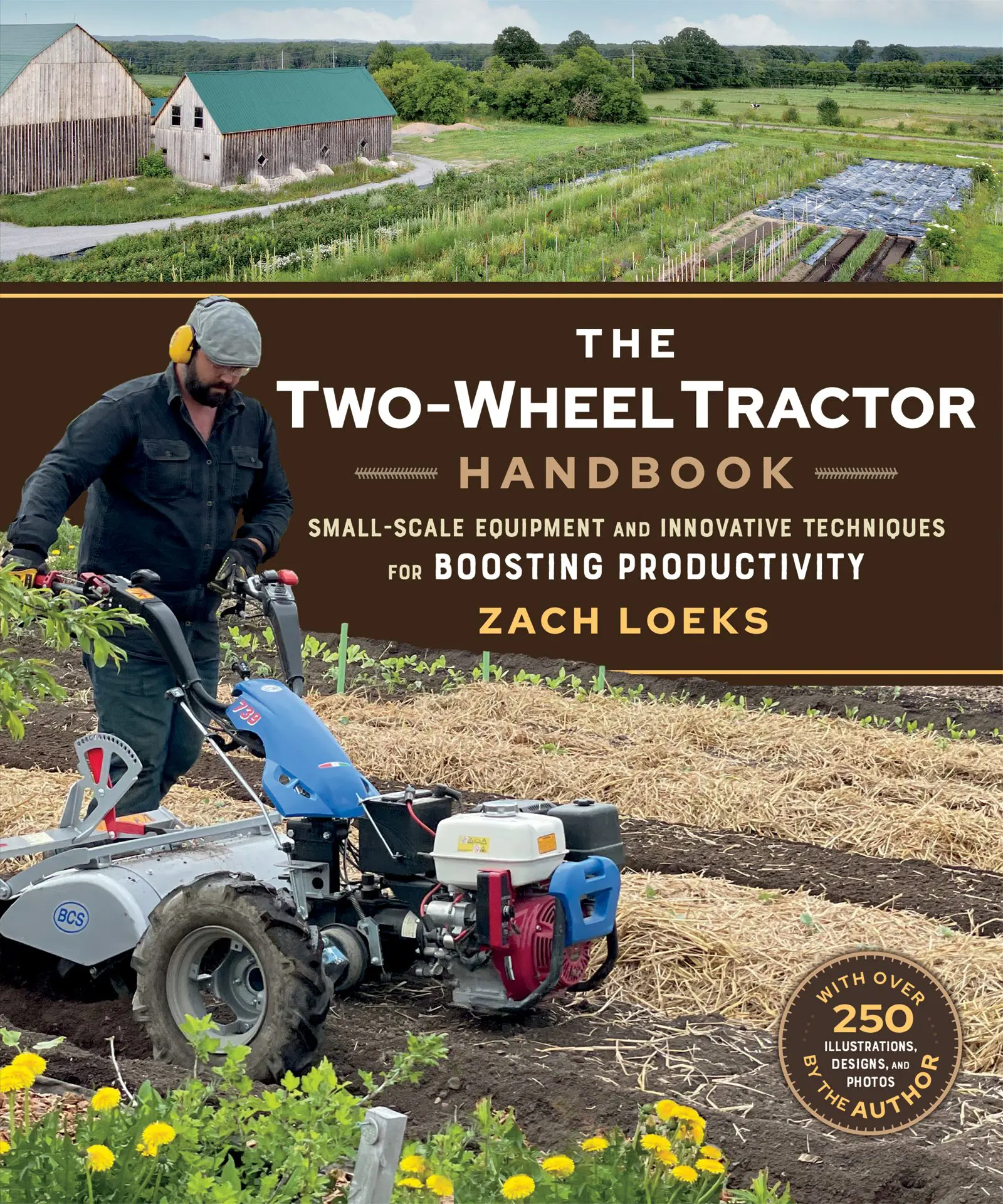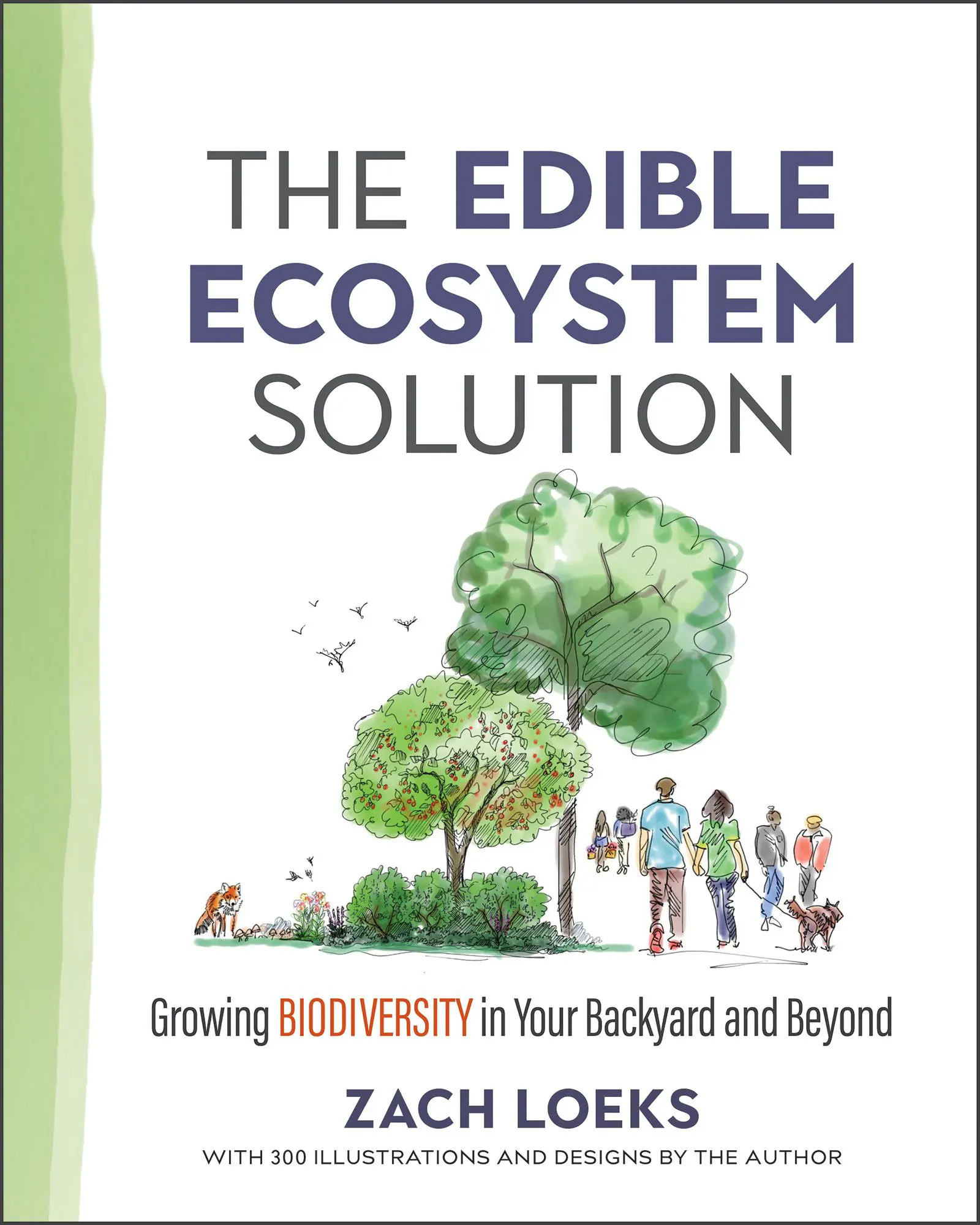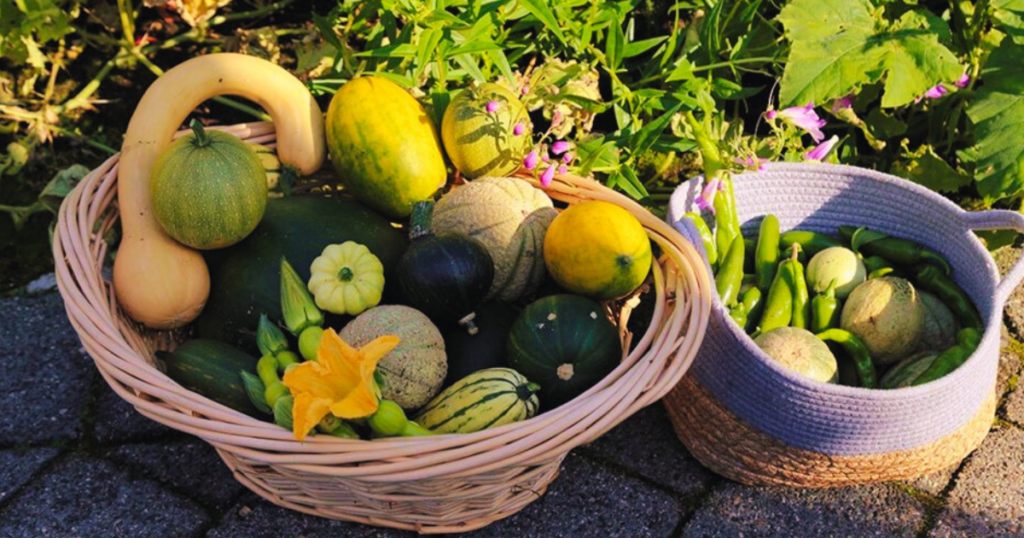
More affordable than four-wheel tractors and infinitely more versatile than single- purpose power equipment such as rototillers, two-wheel tractors are an ideal solution for an astonishing array of garden, landscaping, and agricultural applications.With The Two-wheel Tractor Handbook, author Zack Loeks offers a strong case for these multi-use, efficient tools. To get you started, here are 11 benefits to incorporating a two-wheel tractor into your small farm, market garden, or home garden.
Excerpt from Chapter 2: Two-Wheel Tractor Essentials
This tractor goes by many names: “two-wheel,” “single-axle,” and “walk-behind,” all of which highlight its small-scale nature. But the word “tractor” defines its multi-functional use and sets it apart from the plethora of look-alike single-purpose power equipment. It has one system (engine, transmission, wheels, PTO) powering multiple interchangeable implements. It can do the work of a shed-full of power equipment, with only a single system to maintain.
A tractor can be simply defined as a land-management machine that has a universal hitch and PTO so it can operate various implements to perform different jobs—from mowing to tilling, and snow blowing to hay baling. A PTO (power take-off) is an efficient mechanical part that carries the energy transferred along the drivetrain from the engine and applies it to any number of implements that have no power of their own. Innovated in the first half of the 20th century, the PTO revolutionized farming by allowing a wide range of implements to be developed, all of which are engaged by the mighty power of an engine rather than relying on being ground-driven (like a compost spreader), or pulled through the soil (like a plow, which usually has no moving parts). Whereas, a PTO-powered implement (like a rototiller) is powered by the PTO connection to a tractor’s engine. We will look more at different types of implements later. Many two-wheel tractors have PTOs, and all have hitches for multiple implements.
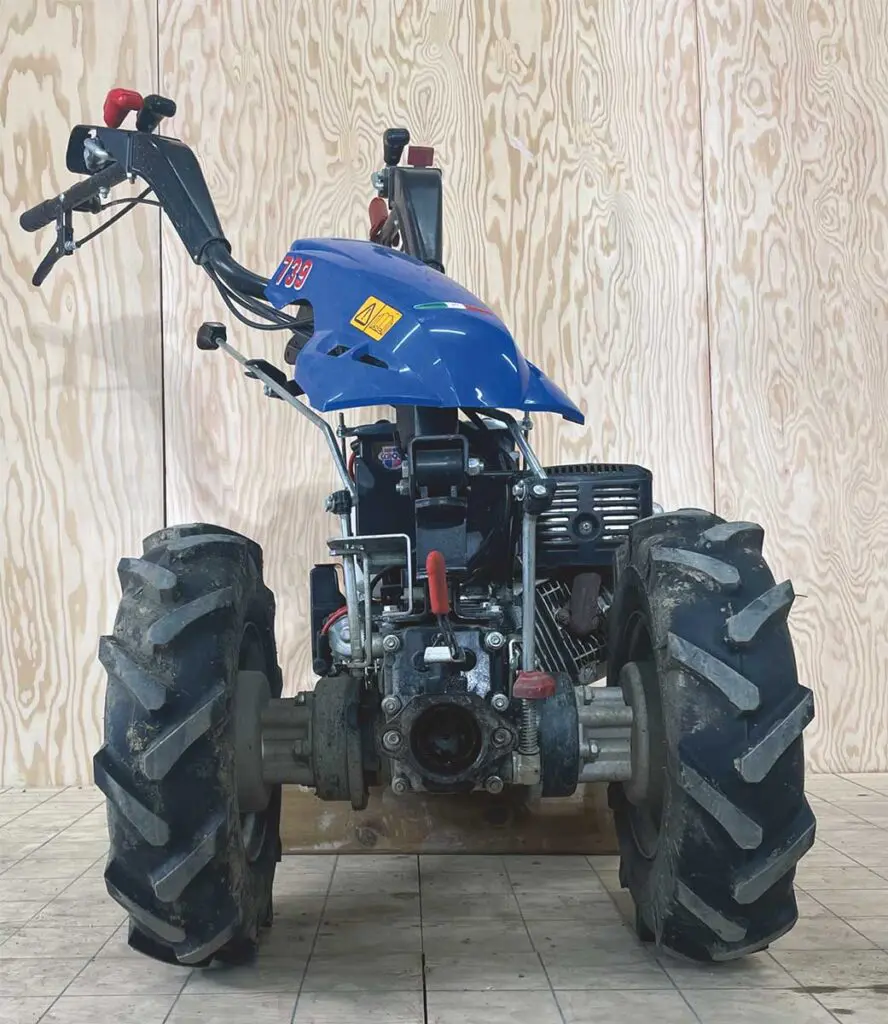
| The term “rototiller” is thrown around casually and is often mistakenly used to refer to a two-wheel tractor! (1) Small “rototillers” are essentially powered hand tools. (2) Larger “walk-behind rototillers” are still only single-implement machines. (3) Two-wheel tractors are in a class of their own. They have a PTO and hitch system similar to four-wheel tractors, and they can connect to multiple implements. Their versatile design allows the ability to rotate the handlebars, which allows the two-wheel tractor to be used in two different implement modes: (4) front-mounted (implements like flail mowers), or (5) rear-mounted (implements like rear-tine tillers with precision depth rollers). |

Two-wheel tractors are great small-scale equipment, making land management a breeze. They are suitable for many enterprises that need affordable, maneuverable, multi-functional equipment.
- Multi-functional: Two-wheel tractors have only one engine, yet multiple implements can be used — opening up opportunities for many enterprises.
- Easily learned: These tractors have a simple but effective design. They have a short learning curve compared to larger equipment.
- Task-appropriate power: Most two-wheel models have between 4 and 13 hp, but some can be found as low at 1.5 hp and some upward of 16 hp. This is a practical power range for many small-scale jobs that are often done with overkill engines in landscaping and farming.
- Budget-friendly: A grower can pick up a tractor and all needed equipment on a modest start-up budget. Two-wheel tractors start at around $2,500, whereas the smallest “compact” four-wheel tractors still cost ~$13,000 to ~$16,000. Two-wheel tractor implements cost between $500 to $3,000, compared to $5,000 to $15,000 for four-wheel tractors. Note: All price are in USD as of 5/2022.
- Seasonal implements: The two-wheel tractor performs (with the correct equipment) spring, summer, fall, and winter tasks.
- Equipment options: Equipment comes in different widths to match the scale of your operation and with different accessories that can be customized to your terrain and tasks. Different equipment versions suit different needs and budgets. For example, there are more than three types of plows; each has its own merits.
- Low impact: Two-wheel tractors cause far less compaction on your soil and use less fuel—while still doing a job right.
- Low maintenance: Two-wheel tractor maintenance is straightforward. Components are easily visible and accessible, and there is no need for specialized tools beyond those found in a typical home garage.
- Maneuverable and easily controlled: These tractors are maneuverable, well-balanced, small, and have a tight turn radius. This is ideal for negotiating sloped land, garden headlands, and greenhouses. There are two main types of two-wheel tractors (discussed shortly), and both are very maneuverable. The first type, the row crop tractor provides excellent cultivation and seeding control with its great hitch design, while the most popular type, the multi-purpose tractor, has a drive system that is perfect for maneuvering with loaded carts, mowing, and heavy soil working.
- Easy storage and transport: These machines are easy to store. With foldable handlebars and a compact size, they can be loaded in the back of a pickup truck or on a small trailer.
- Safe handling: Their scale and features make them safe for operators at all levels of experience (with proper training, of course).
